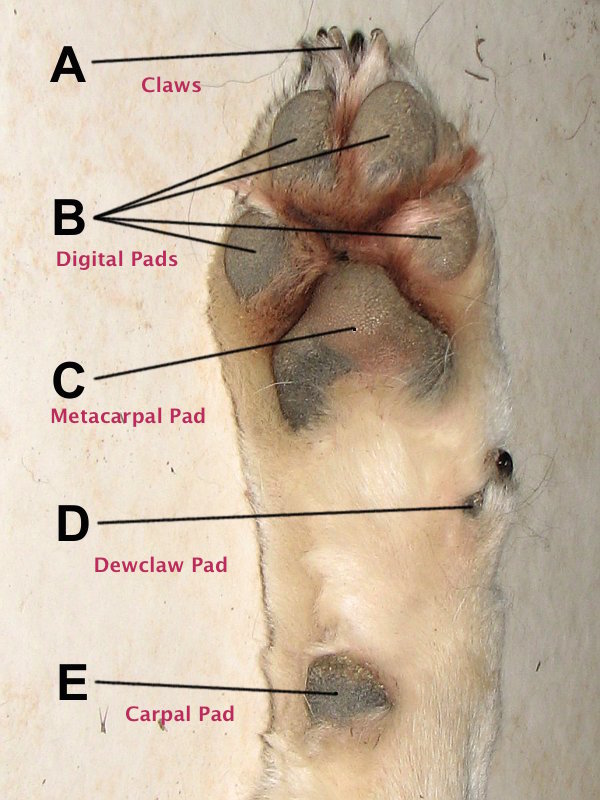
Although our purebred dogs have several accepted foot shapes written into their breed standards, a flat foot isn’t accepted in any of them. Why? Because a flat foot is prone to break down under all conditions, especially if you run or jog with your dog, he or she run agility, or participates in other high impact sports such as catching a frisbee. Look folks, this stuff isn’t just for show dogs.
Your dog’s digital and metacarpal pads are shock absorbers and work to protect the bones and joints in their foot. Their carpal pads work like brakes and help your dog deal with slick or steep slopes. Because dogs are digitigrade animals, they carry the majority of their weight in their toes (as opposed to their heels).
Certain breeds, like the St. Bernard and Newfoundland, have wide, sprawling paws to give them a better grip on snow and ice, and some breeds, like Akitas, Dobermans, Airedale Terriers, Bull Terriers, Keeshonden, Finnish Spitz, and Greyhounds, have “cat feet,” feet that have a short third digital bone resulting in a higher arches and a compact feline-like foot. Feet like this gives a dog greater endurance because their paws are so light. Other breeds, such as the Samoyed, Bedlington Terrier, Skye Terrier, and Borzoi have “hare feet,” that are more elongated because the two middle toes are longer than the outer toes.
